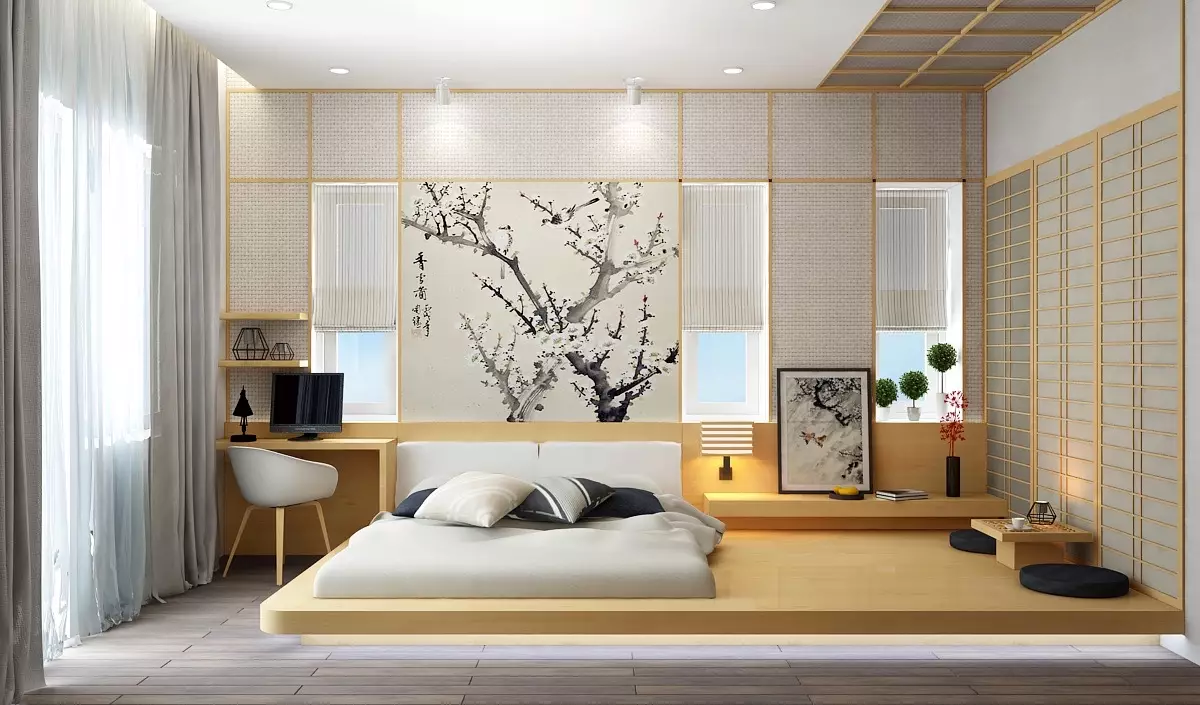Minimalism is about cleanliness and orderliness, making it great for cutting down on clutter of any kind. For minimum material impact, and to cause no disruptions, don’t paint your home: instead, pick designs that focus on the natural light, and the colours of your home and its furnishings.
Make sure you use multifunctional furniture that is neither taking up space in your home nor appearing visually overcrowded, for example, a storage hutch that can also serve as a display case or coffee table.
Less is More
Minimalist decorating is also selective about what it adds: if the attempt is to create an atmosphere of clean and careful quality, then one would expect to only add things that justify that quality, with benchtops and other surfaces tending to be empty or clear, with few or no artworks on the walls, and no literally frame-filling piles of papers, stacked volumes, or collections of tiny trinkets – all features of the unmistakable minimalist style.
Minimalism depends heavily on neat storage to eliminate clutter – often including storage built into furniture items themselves, in the form of open shelving, for example, that allows you to see everything you have stored without doubt relating to where it is placed.
You could keep most leather or faux-leather home plants in their original cartons and arrange them with wall art and area rugs on shelves in that minimalist living space. You’d want to make sure that spaces like this one have an abundance of natural lighting to maximise the impact of the greenery.
Empty Spaces Are Favorable
Uncluttered surfaces and straight lines are hallmarks of minimalist interior design. That doesn’t mean giving away or throwing out everything you hold dear, but it will likely lead you to consider where and how your storage works as you keep the things that stay.
Likewise, you might build a recessed shelf to hold books while hiding messy cords in a living room, or you might just as well decorate a teeny-tiny space with little details such as potted plants of the same size or one painting as a decorative element while also restraining yourself from taking it too far.
Natural materials such as stone and wood are often the best materials to use in minimalist spaces – be that on a floor or as cladding materials such as stone. Flooring materials like stone and cladding materials with wood such as 2×2 horizontal cedar slats offer eye-catching appeal – exemplary examples here!
Natural Elements
Natural elements, such as wood, stone and plants, not only warm up minimalist apartments but ensure that the material environment integrates seamlessly with the ambience. Natural elements can also contribute to inhabitants’ wellbeing as they promote good air quality, and facilitate a healthy, enjoyable and rewarding interaction with nature.
Functional furniture is a staple of minimalist design, ensuring that there is no visual distraction to hinder the important job of each item. This elegant dining table set from West Elm features a sleek design and geometric forms to complement any minimalistic home.
Sergio Mercado, a New York-based designer, is known for minimalist spaces that emanate an air of polished elegance paired with refined comfort, offering an escapist realm of luxury while still being approachable, raw and humane. His spaces are composed of layered neutrals, popping details and selected textures that are all married together to create tranquil and harmonious atmospheres, incorporating ‘wellness’ details in every interior he does in order to enhance its sustainability and aesthetic appeal.
Patterns and Prints
Pattern can even be incorporated into the work of a minimalist, as long as it’s abstract and subdued (and features various textures that enhance the flat planes, smooth curves and simple shapes of minimalist forms rather than detract from them).
The addition of storage, both shelving to contain things out of sight and cabinets to spotlight one’s possessions, can make for a clutter-free home that also operates as a retreat and work space, without looking like a dump.
Let the decor be unobtrusive and unify natural elements and views — this is how to use the minimalist decorating style. Painted pale gray, shiplap going vertically up a wall in this living space highlights the high ceiling and the mountain peaks beyond, while rounded forms tie in nicely with straight-edge furniture pieces like rawhide-strap chairs and plank-top tables.
Natural Light
Neutral colours are used in minimalist homes, but they feel calm. Additionally, these homes are large and airy, with big windows, clear benchtops or surfaces and walls not adorned with pictures or collections of knick-knacks.
Lighting in minimalist interior design styles accentuates a single focal point and doesn’t dominate the rest of the room, and provides scope for windows and doors to allow natural light to enter freely and to accentuate natural elements within it.
One of the easiest ways of achieving minimalist style is to buy furniture that serves multiple purposes. A storage hutch doubles as coffee table and ornament all in one, for instance, while portable room dividers or screens could help you to make the most out of your living space. Minimalism also highlights the aesthetic qualities of the materials so anything you will buy should be made out of the best materials available. Noble materials such as marble or porcelain will, obviously, give you the greatest result.

